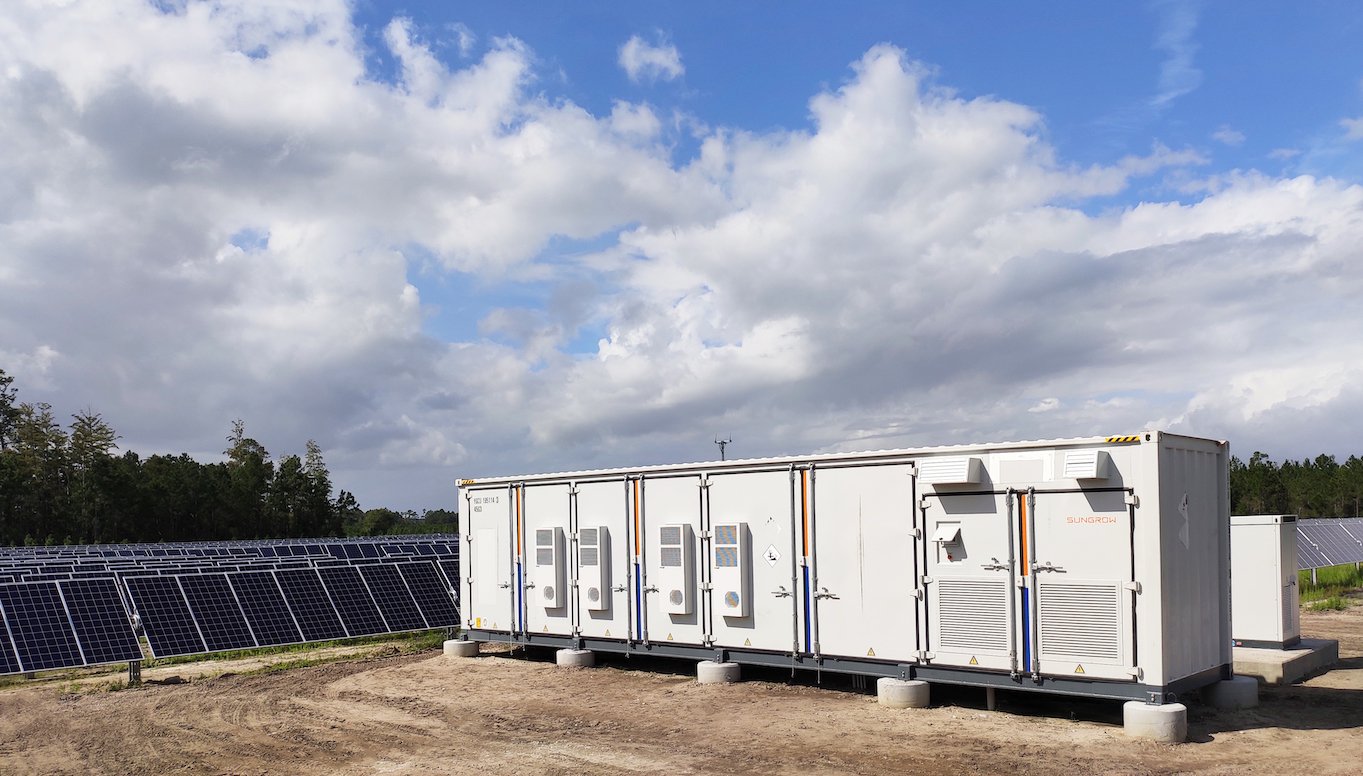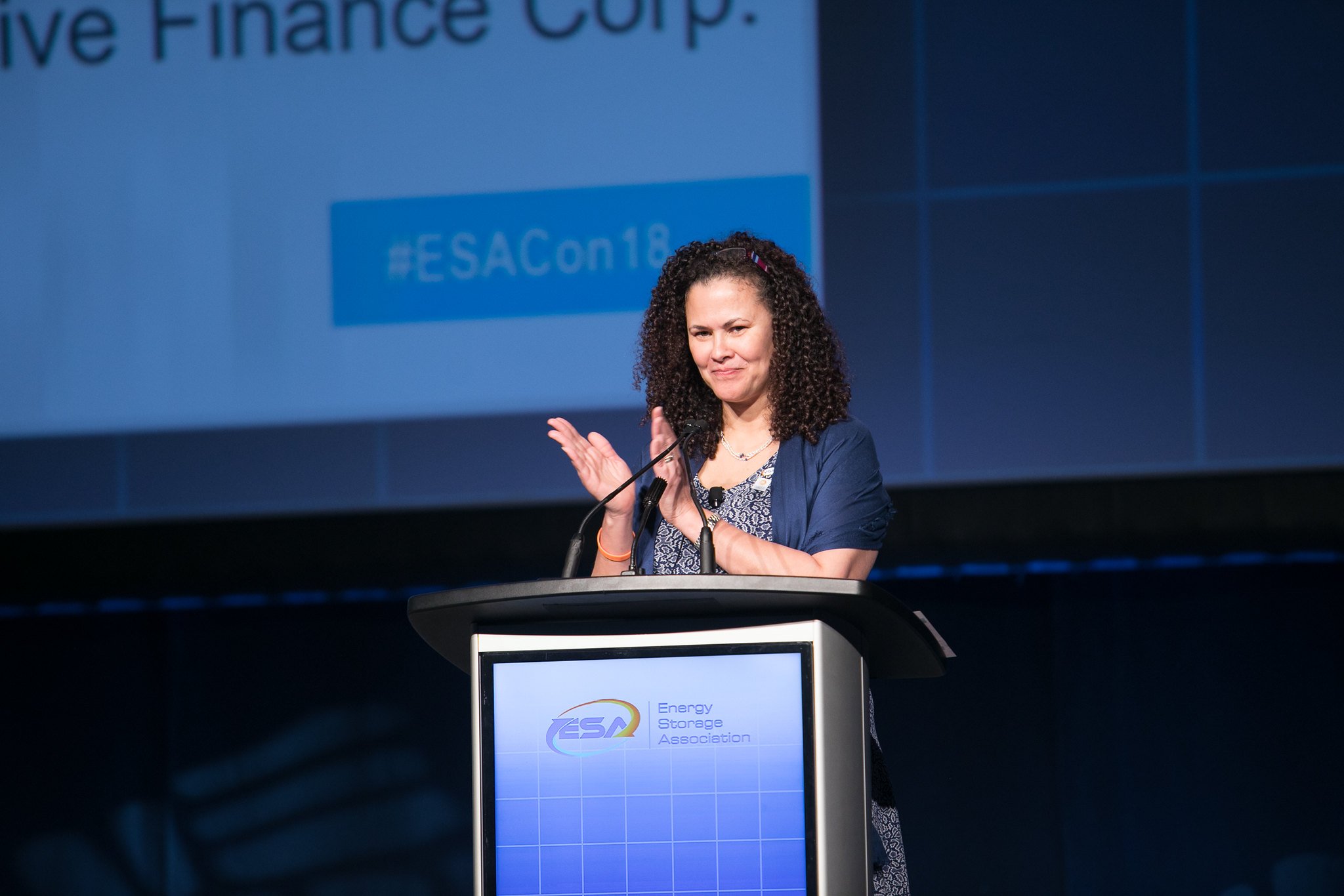Despite making huge strides forward, the energy storage industry’s work in helping stakeholders across the value chain understand the technologies and the roles they can play in a renewable energy future is far from done. Andy Colthorpe speaks with Energy Storage Association chief executive, Kelly Speakes-Backman, at the forefront of the industry’s push into unchartered regulatory, policy and public affairs matters. This article first appeared in 'Storage & Smart Power' – Energy-Storage.news' contributed section of the quarterly industry journal, PV Tech Power.
“We almost doubled last year, we’re on track to double here again in 2019 and projections show that we are looking to triple in 2020,” Kelly SpeakesBackman, US Energy Storage Association (ESA) CEO, says.
Enjoy 12 months of exclusive analysis
- Regular insight and analysis of the industry’s biggest developments
- In-depth interviews with the industry’s leading figures
- Annual digital subscription to the PV Tech Power journal
- Discounts on Solar Media’s portfolio of events, in-person and virtual
“That’s the state of where we are,” the trade group chief adds, explaining that ESA represents all forms of energy storage, “not just lithium-ion”. Her home country’s energy storage industry is enjoying a rare degree of what she calls “extremely strong, bipartisan support,” from Congress and the Department of Energy to other administrations including the Department of Commerce.
’An efficient, affordable and sustainable grid’
This support comes because there’s a growing recognition, Speakes-Backman says, that energy storage – batteries or otherwise – is a help, not a hindrance to the grid.
“Energy storage is certainly there to integrate intermittent resources like solar and wind and help enable our grid to get cleaner, but it’s also there for grid operators to improve the efficiency of the grid, to improve resilience.
“We are there for an efficient, affordable and sustainable grid. It’s all of those things. That’s part of the reason why we’re enjoying such strong support. It’s being embodied through tremendous growth.”
Now based in Washington DC, Maryland native Speakes-Backman became CEO at the ESA in mid-2017, representing its 180 member organisations along the value chain from electric utilities to financiers, manufacturers and component suppliers at events and in the corridors of power.
Fast-moving tech vs incumbent frameworks
A former Maryland Public Service Commissioner in the early 2010s, Speakes-Backman understands the pressures that those coordinating electricity networks face. She says that educating stakeholders remains a crucial part of ESA’s work.
“By that (‘stakeholders’) I mean decision makers like big commissioners, federal commissioners, independent system operators, utilities who are part of our membership, helping people understand what storage is, and what it isn’t.
“As much as we’re an enabling technology, we’re disruptive to the regulatory frameworks that exist both at the federal level and at the state level. We’re not necessarily generation, not necessarily transmission, we’re not really distribution but we can be all of those things in a single asset and that’s different than what typically been considered in long-term planning. So, it is disruptive.”
However, while disruptive to the existing energy paradigm, energy storage is also hugely enabling, Speakes-Backman emphasises. Not only for solar and wind, but natural gas plants can be made faster-ramping, more efficient and able to play into ancillary services markets with the addition of energy storage, for example. “And it helps nuclear and even coal and other resources react faster to demand changes on the grid, so to me, it’s an enabling technology but [it’s] disruptive to frameworks,” Speakes-Backman says.

US$1bn investment mark, rapid jobs growth
Energy and climate have become politicised topics on both sides of the Atlantic, but so too has employment. Coal plants are retiring and no one whose relative died of black lung will miss them, while it has been reported that some workers at the UK’s Hinckley Point nuclear construction site are suffering mental health problems, facing years away from their homes and families. Solar has been a mostly bright story in terms of rising employment and – at the moment at least – energy storage is also a job creator. This year, investments in US energy storage hit the US$1 billion mark and the rise in the number of people the sector is hiring is worthy of comment.
“For the first time there was a breakout on energy storage for the grid in the jobs report for energy which used to be done by the DoE but is now done by Energy Futures Initiative with [former US Energy Secretary] Ernie Moniz and some of his team.
“Energy storage had the greatest growth in jobs of any sector in the US; by 18%, the number of people employed increased in 2018. So, along with doubling our market, we’re also showing strong growth in jobs. Now, in absolute values, it’s not as big as solar or wind, those jobs are big numbers and they dwarf coal right now, but storage is coming along.”
The price is right
The need for education about renewable energy and low emissions technology shows no sign of dying down. In terms of that education piece, one ‘myth’ that’s often encountered is that “batteries are too expensive for the grid”. Which perhaps comes from fundamental misunderstanding of the roles batteries can play, but is nonetheless worth addressing.
Speakes-Backman is more than happy to do so: “I have to always add that we represent thermal, mechanical, pumped hydro, all forms of storage. But specific to batteries and lithium-ion batteries, the costs have dropped down 50% in the last three or four years overall. In the C&I market, those lithium-ion batteries, installation costs have dropped 80% in the last three years. So it is a big barrier that we have, to help people understand that you have to have up-to-date pricing,” Speakes-Backman says.
Customers also have to understand what it is they’re buying, she adds: “This is not like a traditional asset, where prices, installed costs, bounce up and down maybe within a window of 5% to 10%. Costs are going down and projected to continue going down 10% to 15% year-over-year, and that’s in some of the learnings of soft costs and installation costs right now.”
As people are no doubt starting to see, EVs and consumer electronics battery volumes are driving costs down and “driving economies of scale for the grid-sized or stationary storage market that are incredible”, the ESA CEO says.
“When we see Commissions looking at the cost-effectiveness of storage, one of the first things we say is ‘make sure you’ve got up-to-date pricing’.”
And it isn’t just what batteries and systems costs that are often misunderstood, there’s also the so-called ‘value side’ of energy storage. Moves to smarter, better metered electricity networks and markets, with settlement timeframes that have shorter windows, are a natural fit for the multiple services energy storage can provide, both today and in the future.”
Long-term resource planning
Key to energy storage gaining a mainstream foothold in the US has been way (some) utilities have welcomed batteries. Moving forward, utilities will increasingly put energy storage in their long-term plans.
“We are seeing a transition for utilities to consider storage in their long-term planning, which is really terrific,” Speakes-Backman says.
“We’ve done a lot of work to make sure that utilities are included in our membership, so they can understand from the inside what some of their competitors and suppliers are thinking in terms of energy storage and the value it brings.
“We’ve also got independent power producers (IPPs), who often service utilities and sometimes compete with them, so we’ve brought them into our membership as full voices. We’ve also done quite a bit of work in white papers on how utilities can use storage in their long-term planning. Because we are fiercely defensive of competition in its purest form, that means we don’t believe utilities should be cut out of ownership – but it should be a fair playing field.”

Wonky talk
In the Volume 20 of PV Tech Power we heard from lawyer Jennifer Key that there could be some pushback in the US over FERC Order 841, the Federal Energy Regulatory Commission’s instruction that transmission and distribution operators allow energy storage – including behind-the-meter – to play into wholesale markets.
On the contrary, Kelly Speakes-Backman says that as a former regulator and keen policy wonk herself, she has not heard of any such pushback. Along with campaigning for a Federal Investment Tax Credit (ITC) for standalone storage (“no other policy would be more impactful”), the ESA looks ahead to Order 841’s implementation.
“[In addition to the ITC and Order 841], there’s also a bill that recently passed through Senate… it had broad support,” she says. “That bill, Senate Bill 1602 is pretty exciting for us on the federal level as it puts about US$1.4 billion to the DoE in a number of different ways. One is R&D, especially for long-term storage support, the other is for demonstration projects, supporting the efforts of municipal utilities and co-ops.”
Keep an eye out too, Speakes-Backman says, for increased energy storage activity across many more than the often-talked about leading states in the US: “Besides the [leading] states of Massachusetts, New York and California and Hawaii that are all moving forwards full speed with energy storage, there have been a number of states that have either put RPSs in place and are now looking at how storage can support those goals, then states like New Jersey and Minnesota, Michigan and Maryland – states that don’t get the headlines of these really large states, they’re moving forward.
“Maryland, my home state, they’re undergoing a pilot, which is only about 10MW, but it’s a pilot to test not the technology, but ownership models. And that’s really exciting.”

